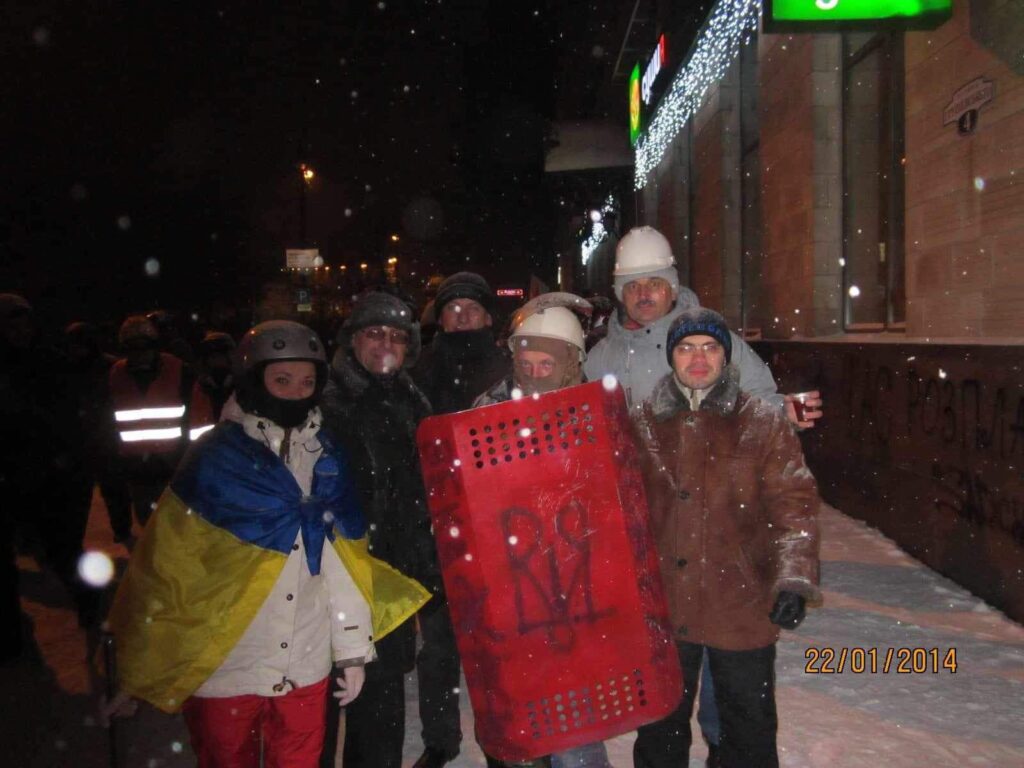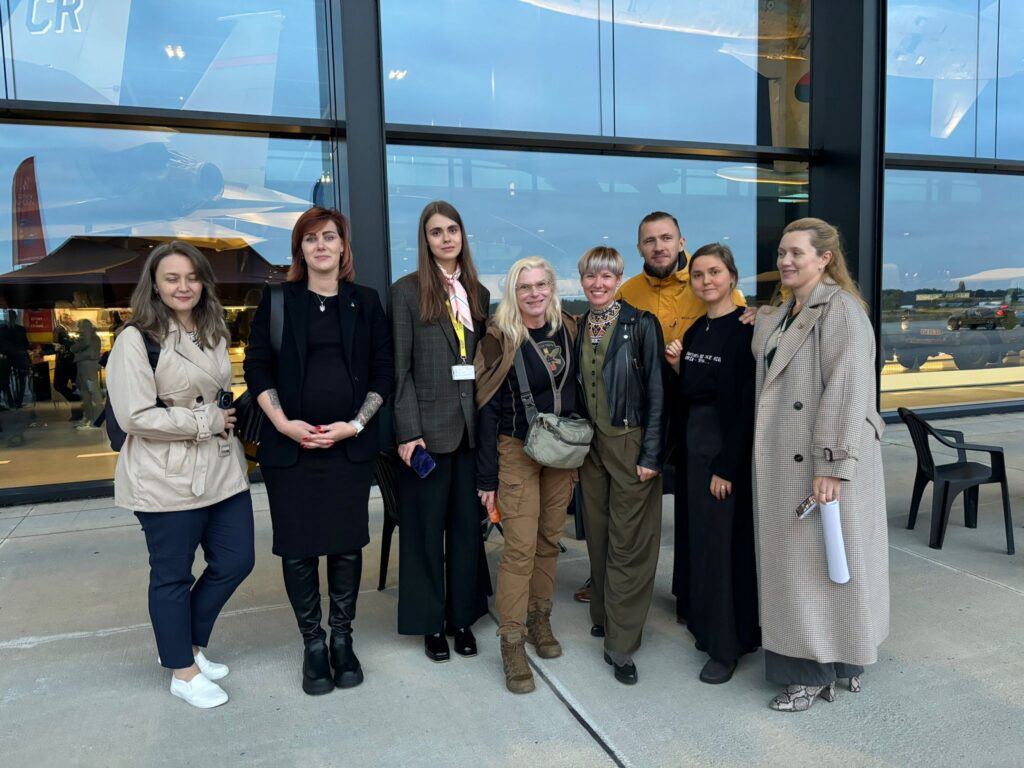What is it like to fight on the front lines? What is it like to live in a country at war? These are some of the profound questions that the exhibition War Stories. Ukraine Up Close that opened at the Nationaal Militair Museum in Soest on October 2 aims to answer.
Through photographs by Eddy van Wessel, video portraits of Ukrainians and collection pieces with a story, the exhibition documents the chronology of events from the Revolution of Dignity in 2013 to the ongoing full-scale russian invasion. The exhibition emphasizes that Ukraine’s struggle for sovereignty has persisted for over a decade, well before the past 2.5 years of the full-scale invasion.

VATAHA’s co-founder Uliana Bun contributed one such artifact: a jacket of her godfather, Igor Bilogan, or affectionately called Uncle Igor, hit by a bullet at Maidan* in 2014. On January 22, 2014, Uncle Igor joined countless others on Maidan, helping to construct barricades.
*Maidan (or Euromaidan) was a wave of civil unrest, preceding the Revolution of Dignity, that started in November 2013. It was sparked by President Viktor Yanukovych’s sudden decision not to sign the European Union–Ukraine Association Agreement, instead choosing closer ties with russia. The events are referred to as Maidan after the Maidan Nezalezhnosti (Independence Square), where they took place.
“As Uncle Igor and his friends paused to capture the moment with a photograph,” says Uliana, “a bullet whizzed by, narrowly missing his ear and piercing his hood.” That day was also marked by a tragedy – the Berkut police had shot and killed Serhiy Nigoyan and Mykhailo Zhiznevsky – the first Maidan protesters killed by shooting, thus marking a turning point in the escalation of the protests.

Artifacts like Uncle Igor’s jacket connect the exhibition to real people, showing that the war isn’t just about statistics—it’s about real lives, families, and futures that are profoundly affected.
As Uliana reflects, “for me, the most important message is that Ukrainians have always been—and will continue to be—ready to fight for their country and build a Ukraine free from russian control. Artifacts from those tumultuous days serve as powerful reminders of this spirit. Even after experiencing the terrifying proximity of death, Uncle Igor did not retreat or hide; he remained on the front lines, determined to do everything necessary to challenge Yanukovych’s regime.”

In addition to contributing artifacts, VATAHA played a key role in organizing individual interviews for the exhibition’s video portraits, fixing participants such as Veronika Mutsei from Zeilen van Vrijheid, her sister Anastasia, who is a member of the Ukrainian Armed Forces, and Hanna Vorosheva and Yuliia “Taira” Paievska, survivors of russian captivity. These interviews provide a powerful, firsthand perspective on the realities of war and the strength of those who continue to fight for Ukraine’s freedom.
In the video, Uliana is showing her godfather’s jacket to Taira, a Ukrainian paramedic and founder of the “Taira’s Angels” volunteer paramedic corps. Taira, described as “a symbol of bravery and sacrifice” by The New York Times, was captured and imprisoned by russian soldiers on March 16, 2022 and released three months later.
Despite the multitudes of challenges of war, the exhibition highlights Ukrainian hope and resilience, focusing on stories of connection and strength amid the ongoing conflict.
The exhibition is on display until August 31, 2025, visit the exhibition website here.